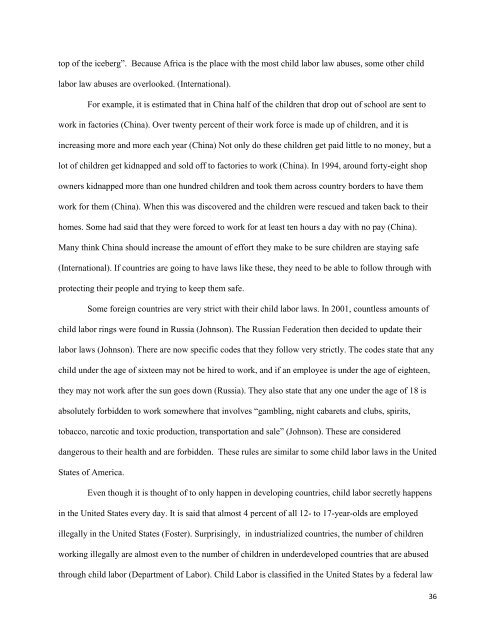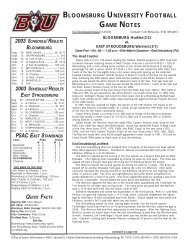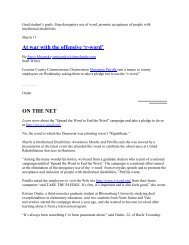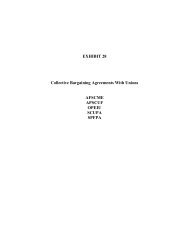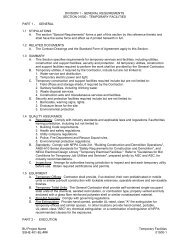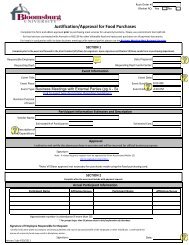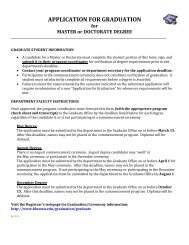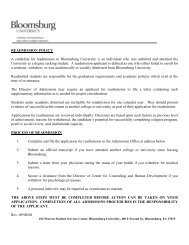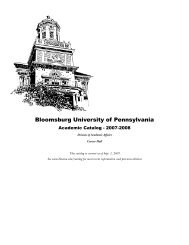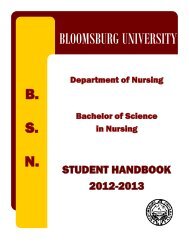Human Rights at Home and Abroad: Past, Present, and Future
Human Rights at Home and Abroad: Past, Present, and Future
Human Rights at Home and Abroad: Past, Present, and Future
You also want an ePaper? Increase the reach of your titles
YUMPU automatically turns print PDFs into web optimized ePapers that Google loves.
top of the iceberg‖. Because Africa is the place with the most child labor law abuses, some other child<br />
labor law abuses are overlooked. (Intern<strong>at</strong>ional).<br />
For example, it is estim<strong>at</strong>ed th<strong>at</strong> in China half of the children th<strong>at</strong> drop out of school are sent to<br />
work in factories (China). Over twenty percent of their work force is made up of children, <strong>and</strong> it is<br />
increasing more <strong>and</strong> more each year (China) Not only do these children get paid little to no money, but a<br />
lot of children get kidnapped <strong>and</strong> sold off to factories to work (China). In 1994, around forty-eight shop<br />
owners kidnapped more than one hundred children <strong>and</strong> took them across country borders to have them<br />
work for them (China). When this was discovered <strong>and</strong> the children were rescued <strong>and</strong> taken back to their<br />
homes. Some had said th<strong>at</strong> they were forced to work for <strong>at</strong> least ten hours a day with no pay (China).<br />
Many think China should increase the amount of effort they make to be sure children are staying safe<br />
(Intern<strong>at</strong>ional). If countries are going to have laws like these, they need to be able to follow through with<br />
protecting their people <strong>and</strong> trying to keep them safe.<br />
Some foreign countries are very strict with their child labor laws. In 2001, countless amounts of<br />
child labor rings were found in Russia (Johnson). The Russian Feder<strong>at</strong>ion then decided to upd<strong>at</strong>e their<br />
labor laws (Johnson). There are now specific codes th<strong>at</strong> they follow very strictly. The codes st<strong>at</strong>e th<strong>at</strong> any<br />
child under the age of sixteen may not be hired to work, <strong>and</strong> if an employee is under the age of eighteen,<br />
they may not work after the sun goes down (Russia). They also st<strong>at</strong>e th<strong>at</strong> any one under the age of 18 is<br />
absolutely forbidden to work somewhere th<strong>at</strong> involves ―gambling, night cabarets <strong>and</strong> clubs, spirits,<br />
tobacco, narcotic <strong>and</strong> toxic production, transport<strong>at</strong>ion <strong>and</strong> sale‖ (Johnson). These are considered<br />
dangerous to their health <strong>and</strong> are forbidden. These rules are similar to some child labor laws in the United<br />
St<strong>at</strong>es of America.<br />
Even though it is thought of to only happen in developing countries, child labor secretly happens<br />
in the United St<strong>at</strong>es every day. It is said th<strong>at</strong> almost 4 percent of all 12- to 17-year-olds are employed<br />
illegally in the United St<strong>at</strong>es (Foster). Surprisingly, in industrialized countries, the number of children<br />
working illegally are almost even to the number of children in underdeveloped countries th<strong>at</strong> are abused<br />
through child labor (Department of Labor). Child Labor is classified in the United St<strong>at</strong>es by a federal law<br />
36


